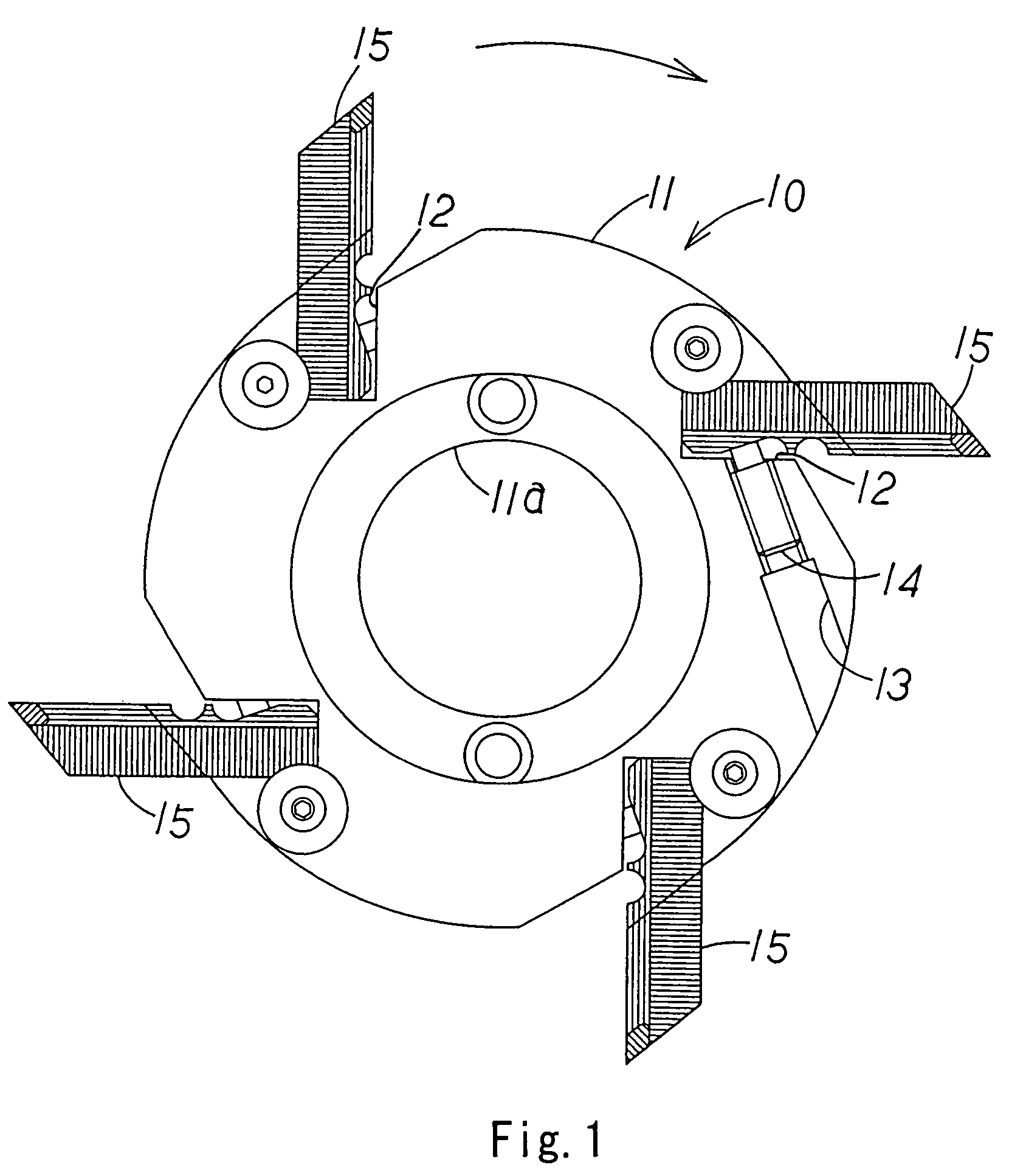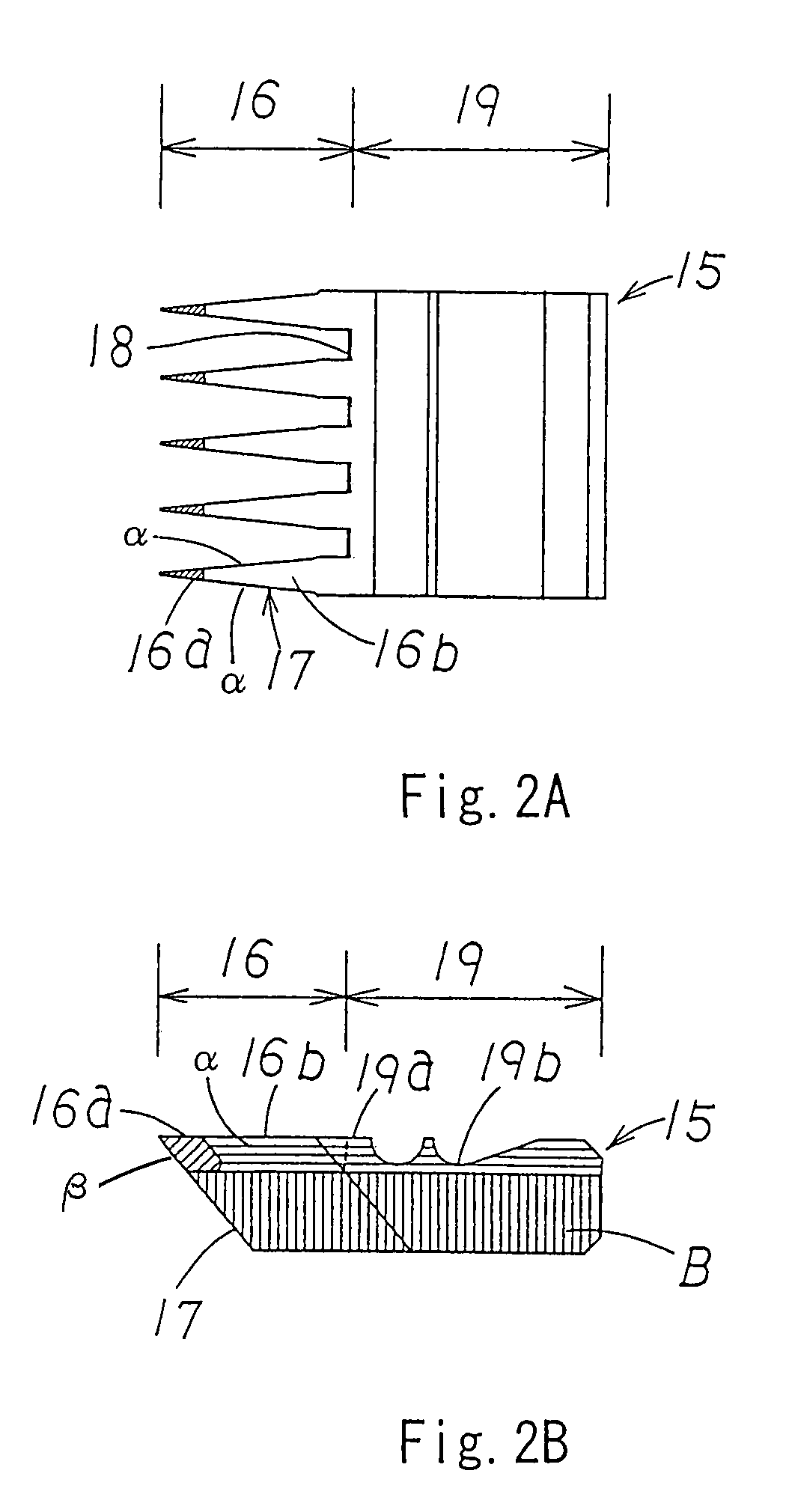Finger cutter
- Summary
- Abstract
- Description
- Claims
- Application Information
AI Technical Summary
Benefits of technology
Problems solved by technology
Method used
Image
Examples
Embodiment Construction
[0016]One embodiment of the present invention will now be explained on the basis of the drawings. FIG. 1 illustrates a replaceable blade type finger joint cutter according to the present invention through a side view. FIGS. 2-A and 2-B illustrate a replaceable blade 15 through a front view and a side view.
[0017]A finger joint cutter 10 is formed with a cylindrical shaped body 11 that is made of steel and is formed with a central hole 11a for inserting a main shaft in its center, and mounting seats 12 extending in axial directions are provided at four portions in a peripheral direction of a peripheral wall of the body 11. Each mounting seat 12 is a concave portion that is inclined frontward in a rotating direction with respect to a radial direction at an angle of approximately 30° and that is notched in a substantially rectangular shape. Replaceable blades 15 are inserted and fitted into the mounting seats 12. Mounting holes 13 are formed on an outer periphery of the body 11 that com...
PUM
| Property | Measurement | Unit |
|---|---|---|
| Fraction | aaaaa | aaaaa |
| Fraction | aaaaa | aaaaa |
| Fraction | aaaaa | aaaaa |
Abstract
Description
Claims
Application Information
 Login to View More
Login to View More - R&D
- Intellectual Property
- Life Sciences
- Materials
- Tech Scout
- Unparalleled Data Quality
- Higher Quality Content
- 60% Fewer Hallucinations
Browse by: Latest US Patents, China's latest patents, Technical Efficacy Thesaurus, Application Domain, Technology Topic, Popular Technical Reports.
© 2025 PatSnap. All rights reserved.Legal|Privacy policy|Modern Slavery Act Transparency Statement|Sitemap|About US| Contact US: help@patsnap.com



